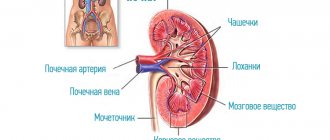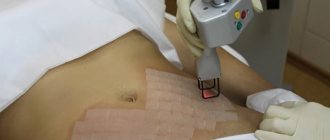- What is tartar
- How is tartar formed?
- Types of Tartar
- Symptoms and consequences of tartar
- How to prevent tartar formation
- Methods for removing tartar
- How is tartar removal performed?
- Removing tartar at home
- Side effects from scaling
- Proper brushing of teeth
- Prices for tartar removal in Moscow
What is tartar and what is the cause of the disease. What methods will help eliminate this aesthetic problem. Is it possible to remove formations without resorting to the help of a dentist?
What is tartar
Tartar is a formation that is a keratinized plaque consisting of poorly removed food debris, calcium, phosphorus and iron salts covered with a biofilm of dead bacteria.
You can find fossilized food deposits over the entire surface of the dentition, but most often the concentration is on the lower incisors, closer to the gums and on the sides.
Please note that tartar can penetrate the back wall and inside the gums. It is usually found in hard-to-reach places where it is impossible to remove food debris with a toothbrush.
How is tartar formed?
Food particles attach to tooth enamel. Most often from soft and sticky foods, such as flour products.
Under the influence of saliva, a film of glycoproteins is formed; if you do not rinse or brush your teeth, then after 4 hours streptococci bacteria come into play, and actinomycetes join them. After 2 days, streptococci decrease, but the number of anaerobic bacteria increases. After 7 days, spirochetes and motile rods appear.
Remains of food and the bacteria that multiply on them are gradually covered with a film of saliva, smoothed out and hardened. Tartar grows because new layers are added to existing particles.
Fermentation and metabolism processes occur under dental plaque, during which acids are formed. They weaken tooth enamel so that tooth decay can develop over time.
Tartar can also cause bad breath.
Plaque can eventually turn into tartar through mineralization—minerals from saliva are deposited in plaque and make it very hard.
This is how complications arise; as a result of a neglected condition, you can lose a healthy tooth, but ringed with plaque.
The rate of mineralization varies from person to person. It all depends on the following factors:
- the amount of saliva produced;
- its composition and activity of secretions;
- quality of oral hygiene;
- nutritional characteristics;
- violation of salt exchange in the body;
- wearing dental structures (prostheses);
The predominance of solid foods (raw vegetables) significantly reduces the development of plaque. The products act as a cleaning agent, helping to remove dirt from the enamel. Chewing for a long time releases more saliva, which has an antibacterial effect.
Why do stones appear on teeth?
Tartar is hardened plaque that has turned into persistent yellow or brown calcareous formations. Plaque gradually builds up on the surface of the enamel, resulting in the formation of large, hard stones. Most often they form in places that are less involved in the chewing process, on the inner surfaces of the front incisors, as well as in the gum area.
The cause of dental calculus is:
- poor oral hygiene;
- use of low-quality teeth cleaning products;
- eating only soft food;
- chewing food with only one side of the jaw;
- metabolic disease.
Dental calculus is also formed due to the individual characteristics of the composition of saliva. If there are a lot of heavy minerals in saliva, they will definitely precipitate. If the patient has problems with personal hygiene, then this process will develop rapidly.
Stones can be localized on the visible part of the tooth, and can also go deep under the gum tissue. As the stones grow, they move the gums away, as a result of which the tissue no longer adheres so tightly to the enamel. Pathological pockets form under the gums, where food and microbes freely enter.
The deeper the bacterial flora penetrates under the gum, the less oxygen remains there. These places become a hotbed for the development of putrefactive processes. An unpleasant odor appears, the gum structures are destroyed, as well as the bone tissue that holds the tooth in place.
When atrophy reaches half the length of the root, bone anchorage is lost. The ligaments cannot withstand the chewing pressure, and the teeth begin to shift, become curved, and gaps appear between them. You can lose a tooth because it does not stay in the gum.
Types of Tartar
Fossils on enamel come in different types depending on location. So they distinguish:
- supragingival stones - formed on the first molars (lateral) and front or lower teeth;
- subgingival - hard areas that penetrate soft tissue;
- stone bridge – covering the main and adjacent teeth.
Symptoms and consequences of tartar
Patients experience the following symptoms:
- bad breath;
- bleeding gums;
- caries;
- purulent discharge;
- gingivitis;
- pulpitis;
- periodontitis – inflammation of tissue areas near the root of the tooth;
- mobility and tooth loss.
Gingivitis
The initial form of gum disease.
If left untreated, gingivitis can develop into periodontitis, which is a serious, irreversible gum disease and the most common cause of tooth loss in adults.
The main 4 signs of gingivitis:
- Bleeding gums. Healthy gums do not bleed. If blood comes out when using a toothbrush or floss, this may indicate the onset of gingivitis. Even if it happens from time to time. The symptom should not be ignored as it may be a sign of the onset of gum disease.
- Unpleasant smell. There are many reasons for a bad odor: specific foods, poor hygiene, but it can also be the first sign of gingivitis. This is due to the fact that the bacteria that cause gum disease produce an unpleasant odor by breaking down food particles in the mouth.
- Swollen gums. They are usually pink and firm. Redness and swelling may indicate the onset of the disease.
- Receding gums. They begin to separate, and the root of the tooth is exposed, the incisors appear longer. Increased sensitivity is another sign.
A common cause of toothache is inflammation of the dental nerve, called pulpitis. Anyone suffering from this should seek help from a dentist as soon as possible.
Pulpitis
In acute pulpitis, pain usually occurs spontaneously. The pain may be constant or occur periodically. In rare cases, the inflammatory process is completely painless.
If the affected tooth is sensitive to pressure and impact, this is a sign of a dead dental nerve. It hurts when you touch the tongue, but especially when you squeeze it. The pain is often worse at night, as the warmth of the bed increases the inflammatory process. If left untreated, bacteria from the medullary cavity of the tooth can penetrate through the hole at the root tip into the surrounding bone and soft tissue. Accordingly, inflammation spreads, the cheek and lymph nodes swell.
Periodontitis
Periodontal disease is defined as chronic inflammatory disease of the gums. It is mainly caused by bacterial plaque (biofilm, plaque), especially in old age.
As a result of inflammation, your teeth may hurt and your gums may bleed more easily. If left untreated, periodontitis can also lead to tooth loss.
Patients with periodontitis usually show few symptoms at first. However, some signs may indicate the disease:
- bleeding gums;
- red and swollen gums;
- Gum recession;
- open and sensitive necks of teeth;
- putrid odor from the mouth;
- unpleasant taste, especially when pus leaks from the inflamed areas;
- The spaces between the teeth widen;
- loose teeth, misaligned teeth.
How to prevent tartar formation
By observing good oral hygiene, you can prevent the (re)formation of tartar:
- Brush your teeth thoroughly at least twice a day using a good manual or electric toothbrush and fluoridated toothpaste.
- Clean between teeth once a day using dental floss or interdental brushes.
- With these measures it is possible to prevent the formation of plaque and therefore tartar, as well as to prevent tooth discoloration and decay.
Methods for removing tartar
- Physical method. Consists of mechanical destruction of deposits using a dental instrument with a thin tip. Modern medicine uses the Air flow system. Fine particles of soda are applied under high pressure, causing a stream of air containing the powder to knock the fossils off the tooth. A subsequent stream of water washes away the separated particles.
- Chemical method. Allows you to remove formations with the help of compounds that dissolve the basis of tartar - deposits of mineral salts. A composition is applied to the teeth that softens plaque, but does not cause significant harm to the enamel. Then the impurities are removed.
- Ultrasound. Ultrasonic waves do not injure teeth and gums. Contraindicated in patients using a pacemaker.
- Laser. The laser method can be used specifically in dentistry for various procedures. It is one of the most effective and expensive procedures. The laser beam is very thin and can be used precisely. This way, only truly unwanted tissue is destroyed. Healthy tissues are preserved. Local anesthesia is often not required. Laser treatment does not cause noise or vibration like drilling. The virtually painless treatment is especially suitable for anxious patients.
How to clean tartar: advantages of the Air Flow method
To remove soft deposits on teeth, modern dentistry uses the Air Flow device.
- cleaning polishing powder;
- air;
- water.
How is tartar removed using this method? Dental plaque is removed under the pressure of a water-air mixture enriched with an abrasive based on calcium or glycine. Air Flow is used in professional dental hygiene for children and pregnant women; it is ideal for cleaning teeth if the patient has braces and orthopedic structures in the oral cavity. Effective when you need to remove tartar between the front teeth and in the far corners of the lateral group of teeth.
The only drawback to removing tartar using this method is the price, which is higher compared to ultrasonic cleaning.
How is tartar removal performed?
At the first stage, the presence or absence of allergies in the patient to drugs will be determined.
Then the degree of sensitivity of the teeth is determined, and an anesthetic is applied as necessary.
The method by which the procedure will be carried out is selected.
For rough tartar removal, an ultrasonic scaler is often used first. This is followed by processing with special hand tools to remove stubborn dirt.
The enamel is cleaned of residual particles of contamination and the doctor begins to polish the teeth so that the surface is completely smooth.
Small irregularities and areas of rougher texture on the teeth are also smoothed out, providing protection against further plaque buildup.
The enamel of the teeth is coated with varnish.
After the work has been done, the dentist will advise how often you should plan to remove tartar.
It should be noted that professional cleaning is only intended to be an addition to daily thorough oral hygiene and should in no way be considered a replacement for brushing your teeth twice daily with fluoride toothpaste.
How to remove tartar using ultrasound: price, features and advantages of the method
Removal of stones from the surface of teeth using ultrasound (scaling) occurs under the influence of ultrasonic vibrations. The procedure is carried out in two stages: removing deposits and removing enamel roughness in cleaned areas in order to prevent plaque adhesion.
In general, the procedure is painless, but the patient may experience discomfort or pain during the process of cleaning stones in the root necks of the teeth. Why do patients choose this method to remove tartar: the price is affordable, the effect is long-lasting due to high-quality cleaning and smoothing of the enamel surface.
Removing tartar at home
Home remedies for tartar can be useful for removing soft plaque without the help of a dentist.
If there is already a hard coating, then you should definitely seek treatment from a specialist. Trying to pick out deposits on your own will not work. As a result, the enamel will only be damaged. It cannot be restored.
- Vinegar and lemon. The acid contained in vinegar and lemon acts against tartar. However, the taste is unpleasant, and the acid has an aggressive effect on tooth enamel. These home remedies should be used no more than once a month.
- Baking powder. The crystals found in baking powder and baking soda act like sandpaper and remove unwanted coating. Dip your fingertip in baking soda and vigorously rub the affected areas. However, the powder can potentially damage healthy gums and tooth enamel.
- Tea tree oil. Rinse your teeth thoroughly with a solution of 1-2 drops in a glass of warm water.
- Xylitol. Xylitol is a sugar substitute and, as an ingredient in chewing gum, can support oral hygiene. Research shows that xylitol is beneficial for dental health.
- Tincture of myrrh. Has a preventive effect. Brush sensitive areas along the gum line to reduce acid buildup. The liquid is also used for gum inflammation caused by tartar or its removal.
- Coconut oil and olive oil. Take one or two tablespoons of natural oil into your mouth and thoroughly rub the liquid between your teeth for several minutes. You must be careful not to swallow it and then rinse your mouth thoroughly with clean water.
- Sesame seeds. Chewing sesame seeds vigorously provides the body with healthy fats and also helps against the formation of tartar. Apply the well-fertilized seed paste several times to the affected areas of the teeth, using your tongue as a tool to create the necessary friction for grinding.
- Celandine. A good remedy not only for skin diseases, but also helps cleanse teeth of plaque. Prepare a decoction and rinse your mouth without swallowing. The plant contains toxins that can harm the stomach.
- A mixture of lemon juice and black radish. Suitable for treatment and preventive measures. Apply to teeth, then rinse with warm water. You cannot clean with a brush after acidic juice, because it softens not only the stones, but also the enamel. You need to wait 30 minutes.
- Decoction of burdock and green beans. Burdock can be picked locally or purchased dry crushed leaves at the pharmacy. The combination of these plants will help soften the stratum corneum.
- Dental floss. You can use it to thoroughly and permanently clean hard-to-reach spaces between teeth.
How to remove stones from teeth in professional dentistry
Teeth cleaning to remove tartar is a mandatory procedure for people who want to achieve a beautiful smile without harming their dental health for many years to come. In the practice of professional dentists, there are several popular methods for removing plaque on teeth:
- Mechanical – performed by a dentist using a special set of tools. In the process, the specialist pries out hard deposits and scrapes the surface of the tooth - this allows you to quickly remove the stone, but causes some discomfort and pain to the patient;
- Ultrasonic teeth cleaning is the most popular method of removing deposits. The advantage of this method is the complex effect of special sound waves on the tooth, as a result of which structures, in addition to the dental structure, are subject to destruction. Thanks to ultrasound, the patient practically does not feel any discomfort and gets the desired effect in a minimum time;
- Chemical removal of dental plaque involves the use of special products, usually presented in the form of gels and pastes, which contain alkalis and acids. This procedure does not cause discomfort to the patient, but has a significant drawback - it is applicable only for removing supragingival calculus; subgingival calculus cannot be removed;
- Laser removal is the most gentle type of procedure. To eliminate it, the doctor uses special equipment that allows you to remove soft and hard deposits from the surface of the teeth under the influence of a laser. The procedure does not cause discomfort or pain, which makes it possible not to use painkillers.
Side effects from scaling
These effects can appear after professional removal and when using folk remedies.
- Uncomfortable sensitivity from ultrasound: Some patients are sensitive to pain from ultrasound because the dental nerve or gums may be irritated. In addition, some people are bothered by accompanying sounds.
- Temperature Sensitivity: Once plaque is removed, teeth may be more sensitive to stimuli such as cold or heat. This is because tartar protects the tooth from these irritants. After removal, he first needs to get used to the intensity of the stimuli.
- Loose teeth: If you begin to notice loose teeth after tartar removal, especially the incisors, this may be a sign of periodontitis, which was previously unrecognized because the tartar was holding the teeth together. Depending on the severity of periodontitis, the dentist treats the bacterial infection of the periodontium with medications.
Dental stone: types and characteristics of deposits
Mineral deposits on tooth enamel are classified depending on what the tartar looks like and in what part of the tooth it is located.
In accordance with the localization of deposits, they are distinguished:
- supragingival deposits;
- subgingival.
The location of the plaque is indicated by its name. Supragingival tartar is easily diagnosed visually without additional examination. What does he look like? – White or yellow tartar that surrounds the base of the tooth along the edge of the gum, has a hard structure or a thick, clay-like consistency. This is a common pathology that affects both adults and children. According to statistics, half of pediatric dentistry patients aged 9 to 15 years have dental deposits above the gums, almost 70% of people under 40 years of age, and the vast majority of patients over 40.
Subgingival tartar is distinguished by its dense structure, the color of the deposits (dark brown or almost black), and the difficulty of diagnosis. Deposits are localized under the gum in periodontal pockets, and the dentist uses a special probe to identify them. The stone is hard and adheres very tightly to the surface of the tooth.
Particularly favorable areas for the formation of tartar are the areas least accessible for quality hygiene:
- between the teeth, near the gingival papillae;
- at the base of the teeth on the inside and outside;
- in periodontal pockets;
- at the implantation site - where the prostheses are attached to the implants;
- in the area of fastening braces;
- on wisdom teeth.
Proper brushing of teeth to remove plaque
Bass technique has been developed to remove food debris from the gum area. It is performed according to the following algorithm:
- Apply paste to brush
- Rinse your mouth with water
- Position the brush parallel to the teeth
- Slightly tilt the brush approximately 45 degrees.
- Move the device without pressing
- Then move in a circle, trying to get the bristles between the teeth
- Go over the entire jaw 15-20 times
- Move in a circular motion along the side teeth
- Do not ignore your tongue; 80% of pollution accumulates on it.
- Remove plaque from tongue
- There are brushes with a rough or bumpy back wall, specially made for cleaning this organ.
- After the outer part is completed, it is necessary to move on to the back wall of the incisors and molars. To do this, the brush is placed vertically with its bristles.
- It is recommended to carry out the procedure near a mirror to see the correctness of your actions.
As you can see, problems in the oral cavity and teeth occur in most cases due to non-compliance with hygiene rules.
Residues of food and the accumulation of bacteria on them create a plaque that hardens over time and cannot be removed by regular cleaning.
This is not only an aesthetic defect, but also serves as the basis for the development of dangerous diseases.
Brushing your teeth twice a day and regular dental check-ups will help reduce the risk of formations.
Prices for tartar removal in Moscow
| Removal of dental plaque (1 tooth) | 150 rub. |
| Ultrasonic cleaning (1 jaw) | 2000 rub. |
| Comprehensive professional preventive oral hygiene (including ultrasonic cleaning, Air Flow, polishing and fluoridation) | 5500 rub. |
| Polishing 1 tooth with abrasive paste | 500 rub. |
| Local enrichment of the 1st tooth with fluoride | 300 rub. |
| Fluoridation (1 jaw) | 2000 rub. |
| Air-flow (1 tooth) | 250 rub. |
| Air-flow (1 jaw) | 2000 rub. |
How much does it cost to remove tartar: price in Dnieper
Tartar removal – the price of such a service depends on:
- 1
chosen method of professional hygiene;
- 2
the condition of the patient’s teeth and gums;
- 3
type and amount of dental plaque.
Dental clinics often offer discounts for regular customers and patients who undergo complex dental treatment (dental treatment, dental prosthetics).











